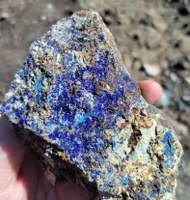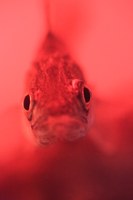Characterization & Management of Natural Resources
 Geological Resources
Geological Resources
Daily-use items like cell phones and solar panels contain non-renewable resources such as rare-earth metals or minerals that need to be extracted responsibly. By prospecting and characterizing these geological resources (through petrography, mineralogy, and geochemistry of supergene ores) and integrating human use over centuries, from antiquity to the electronic age today, ILEE makes a first step toward improving their sustainable management.
Biological Resources
The conservation of endangered species (e.g., salmon and eel) is the goal of aquatic ecosystem management and restoration. Ideal conditions for fish sperm cryopreservation for restocking programmes are determined, or the impact of hydropower plants on fish population is studied. Ecological indicators such as diatoms and macroinvertebrates are used to assess the quality of surface water.
 Sustainable Animal Production
Sustainable Animal Production
Research in aquaculture focuses on the sensible productivity of cultivated freshwater species. An emphasis is placed on the application of immune-stimulation techniques to find alternatives to the use of antibiotics and chemicals, on the substitution of fish meal and fish oil with plant-based substances, and on the improvement of animal husbandry to promote fish welfare. Both temperate (Eurasian perch, pikeperch, and trout) and tropical (striped catfish, African catfish, and tilapia) species are studied.
Photo credits: Julien Poot & Sébastien Baekelandt
 Institute of Life, Earth and Environment
Institute of Life, Earth and Environment

